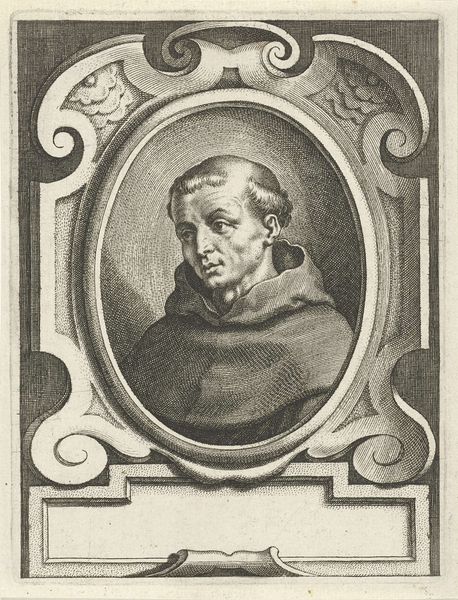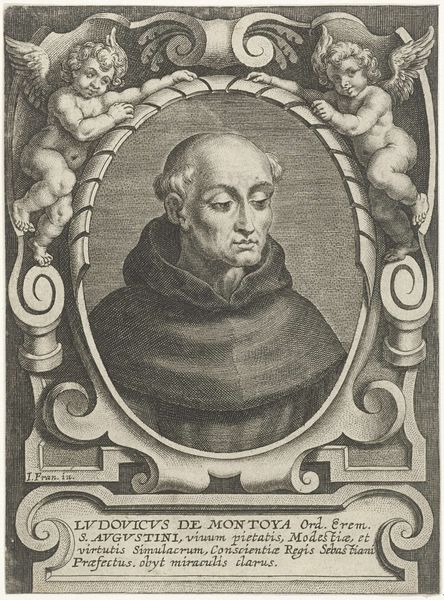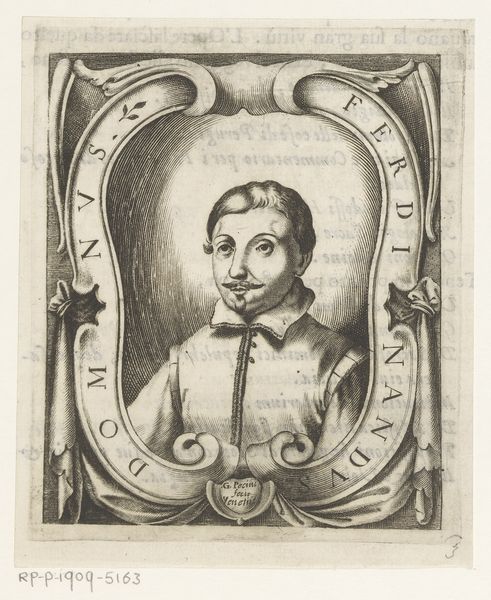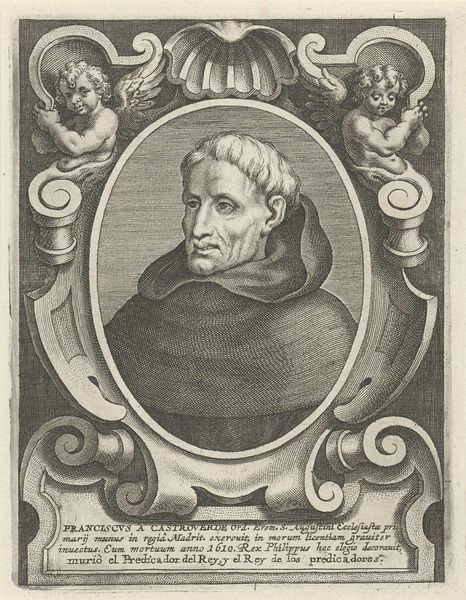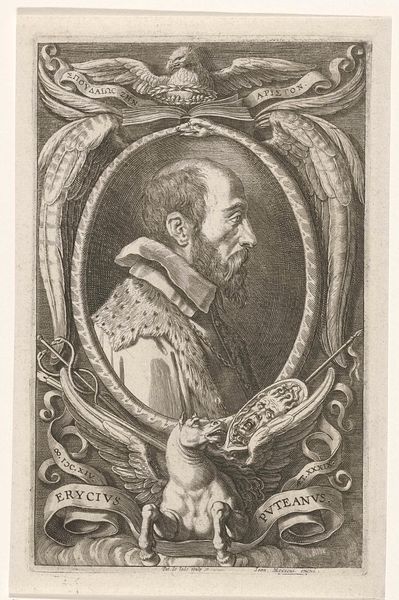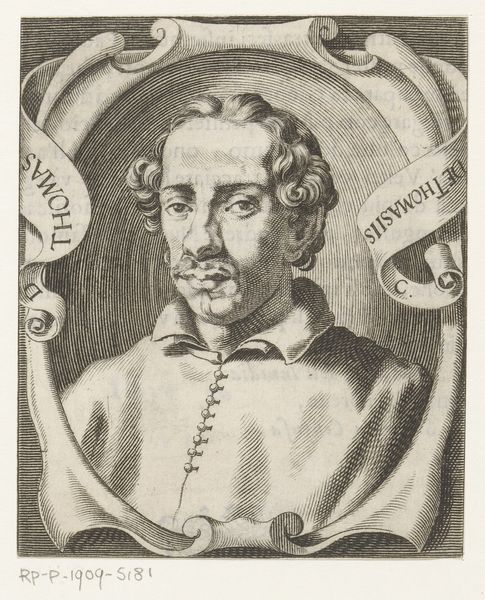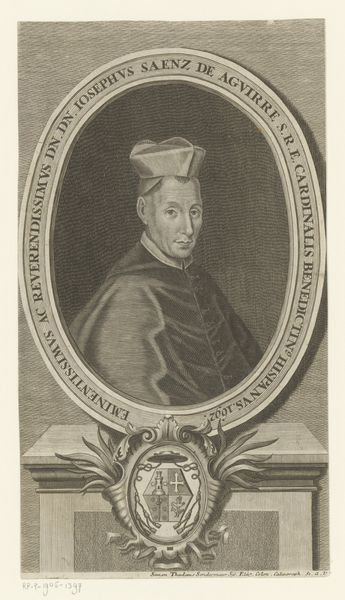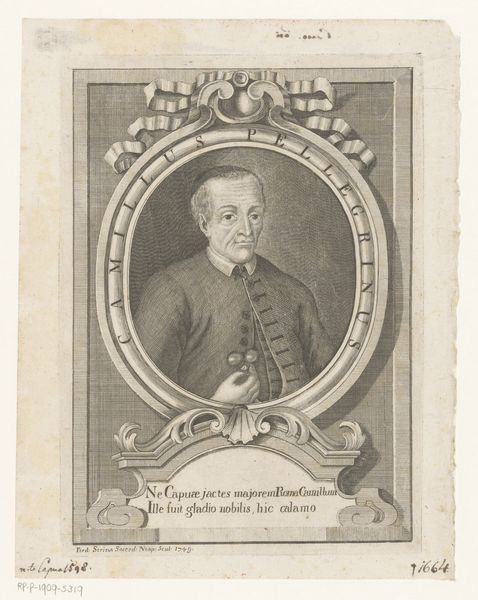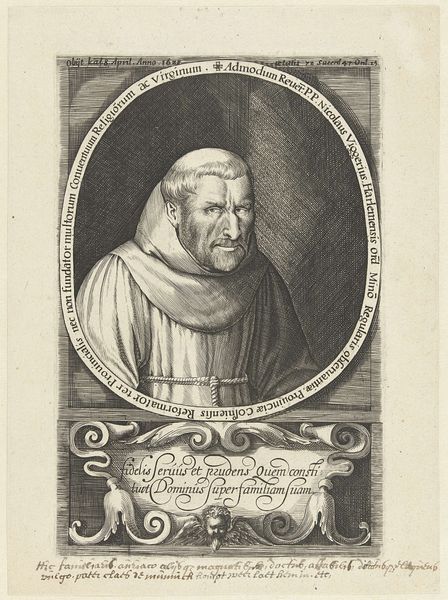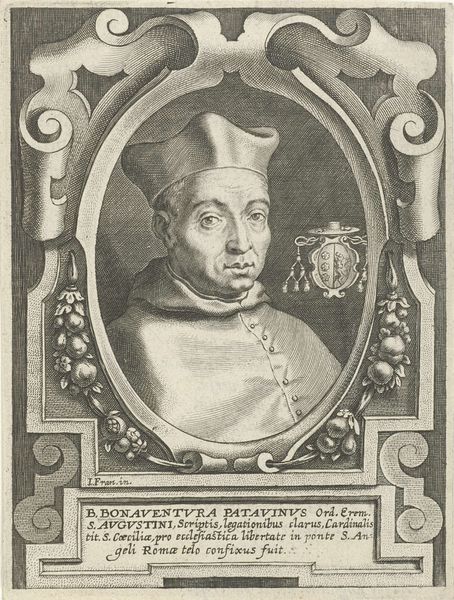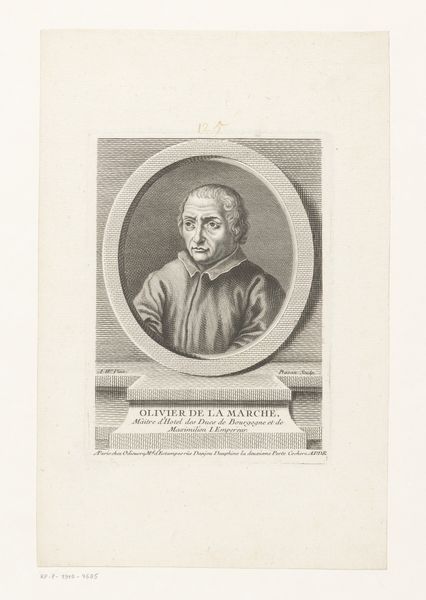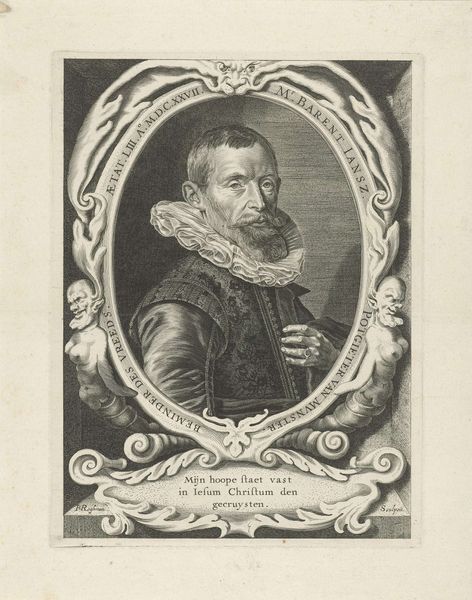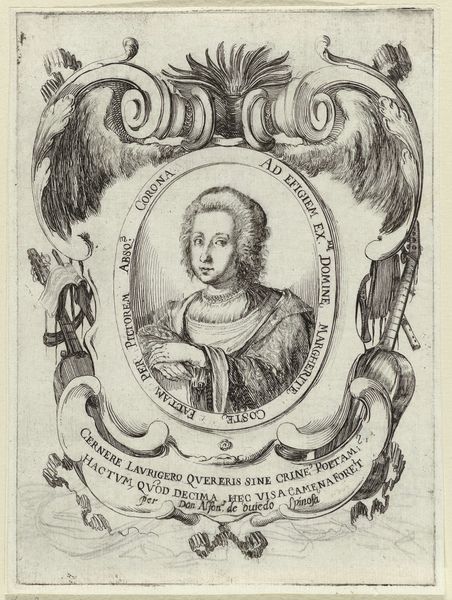
engraving
#
portrait
#
medieval
#
baroque
#
engraving
Dimensions: height 135 mm, width 105 mm
Copyright: Rijks Museum: Open Domain
Editor: So, this is a portrait, "Portret van de Augustijn Johannes González" from 1636, made by Cornelis Galle I. It's an engraving and the subject seems quite somber, holding a cross in one hand and a chalice in the other. How do we unpack the imagery and its cultural significance? Curator: Good eye! It's key to recognize the public function of such engravings at that time. This likely served as a devotional image, circulated amongst the Augustinian order. Notice how the frame isn't just decorative; it adds a sense of institutional authority. The gaze is directed outward, inviting the viewer to identify with González’s piety. Editor: So, it's less about individual artistry and more about communicating a message to a specific audience? Is that why it looks so formal? Curator: Precisely! The formality underscores his role as an exemplar of faith. The chalice and cross are, of course, central Catholic symbols, and their prominence would reinforce the Augustinian order’s commitment to these core tenets during a period of intense religious conflict. Editor: Religious conflict, like the Counter-Reformation? How does that tie into the art world at the time? Curator: Exactly. Printmaking was a powerful tool for disseminating religious ideas and reinforcing institutional power during the Counter-Reformation. This wasn’t simply art for art's sake; it was a carefully constructed message aimed at bolstering faith and allegiance. The figure being displayed for viewers beyond just family members impacts the type of portrait being made. Do you think a personal, privately kept portrait would look different than one created for public use? Editor: That makes a lot of sense! Thinking about it as a political statement changes how I see it completely. It's interesting to look at art through the lens of history and understand its social context. Thank you for these observations. Curator: Indeed. By considering the socio-political climate, we gain a deeper appreciation for the purpose and impact of even seemingly simple works of art. I am also walking away with new ideas on my view of political art and appreciate your insight.
Comments
No comments
Be the first to comment and join the conversation on the ultimate creative platform.
